The dreaded tick, the ectoparasite (external parasites) that we deal with from spring to the first frost, can expose us to many diseases. Ticks are hematophagic, or blood feeders, 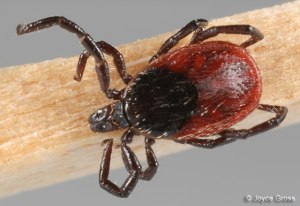 and feed on the blood of mostly mammals and birds. Because of this they are also a vector, or carrier of diseases. Most of us are familiar with the most common of these, Lyme Disease.
and feed on the blood of mostly mammals and birds. Because of this they are also a vector, or carrier of diseases. Most of us are familiar with the most common of these, Lyme Disease.
In horses we are most concerned about another tick-borne disease which can be found throughout the year, Anaplasmosis, formerly known as Ehrlichia. Anaplasmosis is caused by the bacterium Anaplasma phagoytophilum. Anaplasmosis is spread by the Ixodes tick (deer tick & Western black-legged tick). Twenty percent of Ixodes ticks found in areas with horses are found to be infected with Anaplasma phagocytophilum.
Clinical signs for Anaplasmosis do not appear right away in the horse. It can take up to three weeks after exposure from the tick bite to start showing clinical signs. The most common indicator is a fever of 102-106°F. Besides the fever other clinical signs are depression, loss of appetite, limb swelling, and occasionally muscle stiffness. The severity of symptoms is dependent on the age of your horse and duration of the infection. If you suspect that your horse has Anaplasmosis, call your local veterinarian.
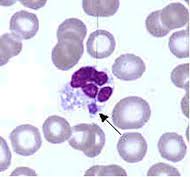 There are a several things that your veterinarian will do to confirm that your horse has Anaplasmosis. The first thing is to collect a blood sample to run a CBC (complete blood count). In the CBC, the veterinarian will be looking for a low number of red blood cells, low platelets, and low number of white blood cells. Secondly, they will create a blood smear with the sample, and look for an inclusion body called Morula that will be present in Neutrophils, a type of white blood cell. However, the presence of the inclusion body usually will not occur until three days after the onset of the fever. Due to this delay, even with a negative blood smear many veterinarians will start treatment for Anaplasmosis if the horse is exhibiting clinical signs. Your veterinarian might also advise performing a Chemistry profile, specifically looking at kidney values for your horse. Due to many horses affected by Anaplasmosis being dehydrated as well as the drug of choice to treat Anaplasmosis being metabolized by the kidneys, the veterinarian will want to make sure that the kidneys are functioning properly.
There are a several things that your veterinarian will do to confirm that your horse has Anaplasmosis. The first thing is to collect a blood sample to run a CBC (complete blood count). In the CBC, the veterinarian will be looking for a low number of red blood cells, low platelets, and low number of white blood cells. Secondly, they will create a blood smear with the sample, and look for an inclusion body called Morula that will be present in Neutrophils, a type of white blood cell. However, the presence of the inclusion body usually will not occur until three days after the onset of the fever. Due to this delay, even with a negative blood smear many veterinarians will start treatment for Anaplasmosis if the horse is exhibiting clinical signs. Your veterinarian might also advise performing a Chemistry profile, specifically looking at kidney values for your horse. Due to many horses affected by Anaplasmosis being dehydrated as well as the drug of choice to treat Anaplasmosis being metabolized by the kidneys, the veterinarian will want to make sure that the kidneys are functioning properly.
The course of treatment for Anaplasmosis is most commonly Oxytetracycline and Banamine to treat the fever. Oxytetracycline is generally given for five days with horses usually responding well. There is currently not a vaccine for Anaplasmosis. Checking daily for ticks is the best preventative measure against your horses contracting Anaplasmosis. Anoka Equine also advises using a topical product called UltraBoss which we have found to be an effective method of tick prevention on horses. Please call us at 763-441-3797 for more information.
Difference from Potomac Horse Fever
Many of the clinical signs for Anaplasmosis are similar to that of Potomac Horse Fever. This may cause confusion as to which your horse may have. Like Anaplasmosis, horses with Potomac Horse Fever show clinical signs of fever, depression and loss of appetite. However, horses with Potomac Horse Fever can develop laminitis, colic and severe diarrhea. Potomac Horse Fever is caused by horses being infected by the bacterium Neorickettsia risticii. Horses are exposed to this bacterium by ingesting infected insects like Mayflies and Caddisflies.
Unlike Anaplasmosis, there is a vaccine available for Potomac Horse Fever commonly given in the fall. If you are in an area that has had Potomac Horse Fever in the past or have low-lying areas of water (swamps or stagnant water) that attract Mayflies or aquatic insects, you should consider adding the Potomac Horse Fever vaccine to your fall vet visit.
If you would like more information on Potomac Horse Fever click here.
By: Katie Jones, CVT (revised 5/16 by PHM)

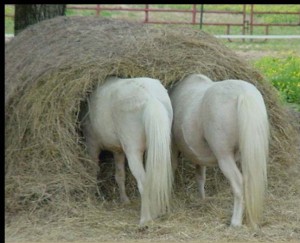
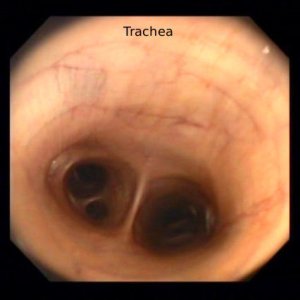
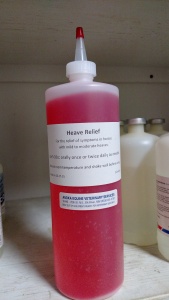
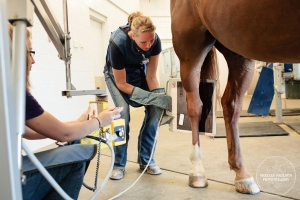
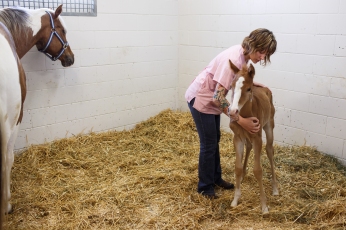
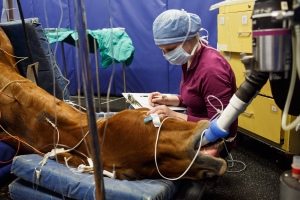
 Shannon joined Anoka Equine in August of 2007. She graduated from Ridgewater College of Willmar in May 2007 with an Associate in Applied Science Degree / Veterinary Technician. Shannon grew up in a VERY small town west of St. Cloud which is where her family’s 10 horses are. She enjoys trail riding and doing parades with her horse Jet, spending time with her family and friends, and basically anything outdoors.
Shannon joined Anoka Equine in August of 2007. She graduated from Ridgewater College of Willmar in May 2007 with an Associate in Applied Science Degree / Veterinary Technician. Shannon grew up in a VERY small town west of St. Cloud which is where her family’s 10 horses are. She enjoys trail riding and doing parades with her horse Jet, spending time with her family and friends, and basically anything outdoors. Kelsey jointed Anoka Equine in the spring of 2008 after graduating from the Minnesota School of Business with an A.A.S. in Veterinary Technology. Most of her time is spent at home with her wonderful family. Kelsey has two boys, Dallas and Tayden, with her boyfriend Todd. They also have two cats, Ravy and Dooker, and a pug named E-gor. In her spare time you will find her and her boys at the barn with their Arabian gelding, Cisco.
Kelsey jointed Anoka Equine in the spring of 2008 after graduating from the Minnesota School of Business with an A.A.S. in Veterinary Technology. Most of her time is spent at home with her wonderful family. Kelsey has two boys, Dallas and Tayden, with her boyfriend Todd. They also have two cats, Ravy and Dooker, and a pug named E-gor. In her spare time you will find her and her boys at the barn with their Arabian gelding, Cisco. Katie joined Anoka Equine in February 2011. She completed a Bachelors of Science in Animal Science/ Pre-vet at the University of Minnesota-Twin Cites in May 2010. She went on to complete a A.A.S in Veterinary Technology at Argosy University and graduated in the fall 2011. In Katie’s free time she enjoys volleyball, photography, horse events, fishing, and traveling. She owns a husky, Luke, and horse, Turbo.
Katie joined Anoka Equine in February 2011. She completed a Bachelors of Science in Animal Science/ Pre-vet at the University of Minnesota-Twin Cites in May 2010. She went on to complete a A.A.S in Veterinary Technology at Argosy University and graduated in the fall 2011. In Katie’s free time she enjoys volleyball, photography, horse events, fishing, and traveling. She owns a husky, Luke, and horse, Turbo. Brittany started at Anoka Equine in July of 2011 after graduating from North Dakota State University with a B.S. in Veterinary Technology. She grew up on a beef ranch outside of Bismarck, ND and enjoyed every minute of it. Outside of work Brittany enjoys riding her Quarter Horse “Doc”, snowboarding, reading, shopping, and being outdoors.
Brittany started at Anoka Equine in July of 2011 after graduating from North Dakota State University with a B.S. in Veterinary Technology. She grew up on a beef ranch outside of Bismarck, ND and enjoyed every minute of it. Outside of work Brittany enjoys riding her Quarter Horse “Doc”, snowboarding, reading, shopping, and being outdoors. Katie Jo joined Anoka Equine March of 2012. She graduated from MN school of Business, Blaine in June 2011 with an AAS in veterinary technology. Katie Jo’s favorite hobby is gaming her grey Quarter Horse “Banjo” and working with young horses. She also enjoys hunting, fishing, softball, and spending time with her family. She also loves her 2 cats and her Blue Heeler X “Dixie”.
Katie Jo joined Anoka Equine March of 2012. She graduated from MN school of Business, Blaine in June 2011 with an AAS in veterinary technology. Katie Jo’s favorite hobby is gaming her grey Quarter Horse “Banjo” and working with young horses. She also enjoys hunting, fishing, softball, and spending time with her family. She also loves her 2 cats and her Blue Heeler X “Dixie”. I was given the opportunity to work for Anoka Equine in November of 2014. I am scheduled to graduate from Minnesota School of Business in spring of 2015 majoring in Veterinary Technology. I was given my first horse at 8 years old, and they have been my life ever since. I have 2 quarter horses of my own, Karma and Wilbur that I game and compete with during the summer. I enjoy spending time outdoors, and spending time with family and friends. I also have 3 cats, and my Mini Australian Shepherd Riley that I love dearly.
I was given the opportunity to work for Anoka Equine in November of 2014. I am scheduled to graduate from Minnesota School of Business in spring of 2015 majoring in Veterinary Technology. I was given my first horse at 8 years old, and they have been my life ever since. I have 2 quarter horses of my own, Karma and Wilbur that I game and compete with during the summer. I enjoy spending time outdoors, and spending time with family and friends. I also have 3 cats, and my Mini Australian Shepherd Riley that I love dearly. 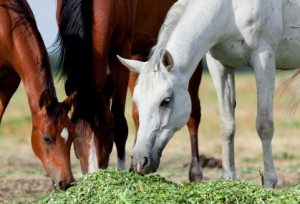
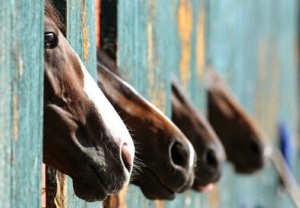
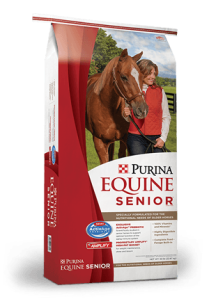
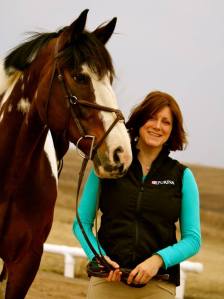
You must be logged in to post a comment.